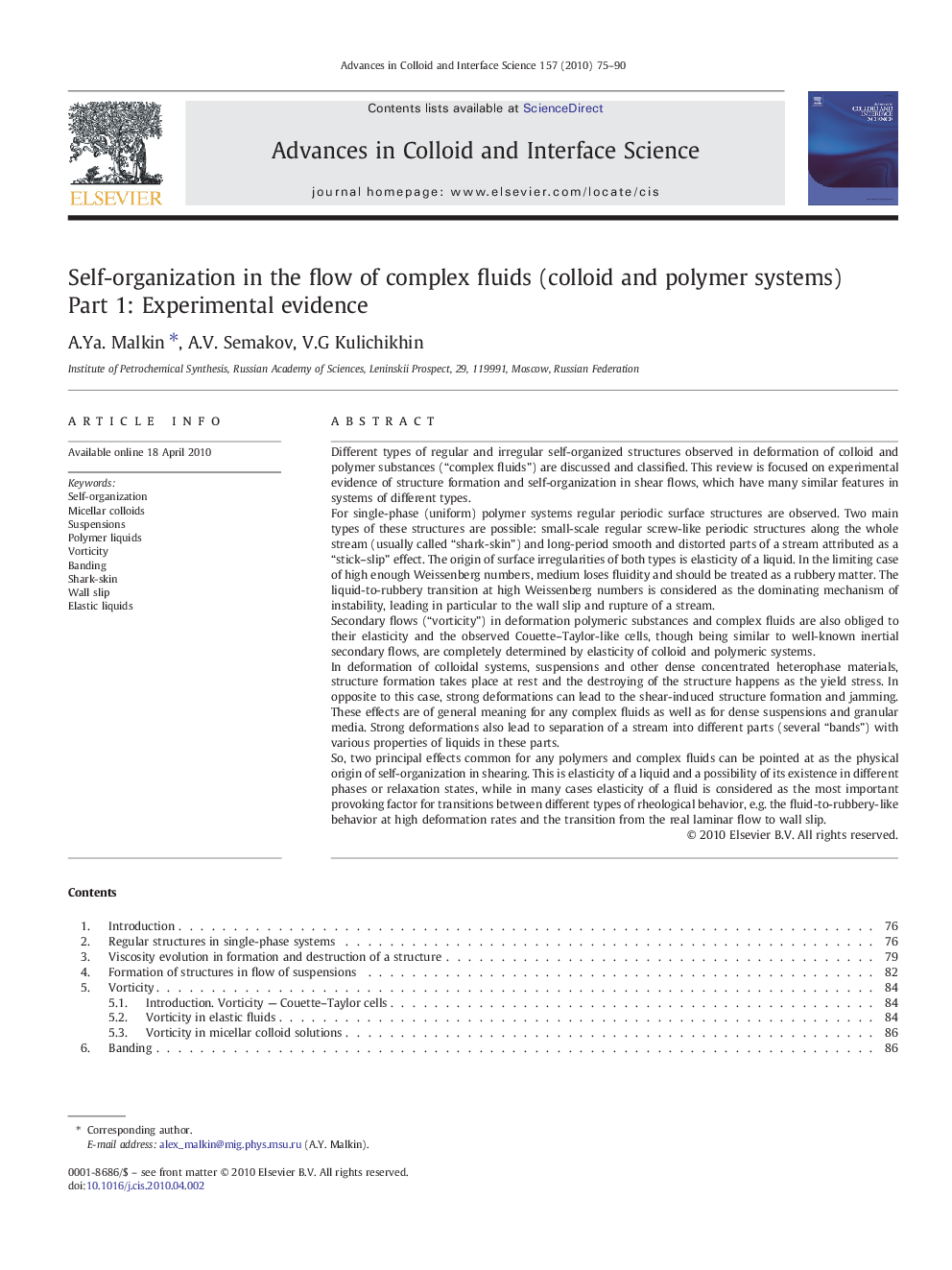| کد مقاله | کد نشریه | سال انتشار | مقاله انگلیسی | نسخه تمام متن |
|---|---|---|---|---|
| 591081 | 1453587 | 2010 | 16 صفحه PDF | دانلود رایگان |

Different types of regular and irregular self-organized structures observed in deformation of colloid and polymer substances (“complex fluids”) are discussed and classified. This review is focused on experimental evidence of structure formation and self-organization in shear flows, which have many similar features in systems of different types.For single-phase (uniform) polymer systems regular periodic surface structures are observed. Two main types of these structures are possible: small-scale regular screw-like periodic structures along the whole stream (usually called “shark-skin”) and long-period smooth and distorted parts of a stream attributed as a “stick–slip” effect. The origin of surface irregularities of both types is elasticity of a liquid. In the limiting case of high enough Weissenberg numbers, medium loses fluidity and should be treated as a rubbery matter. The liquid-to-rubbery transition at high Weissenberg numbers is considered as the dominating mechanism of instability, leading in particular to the wall slip and rupture of a stream.Secondary flows (“vorticity”) in deformation polymeric substances and complex fluids are also obliged to their elasticity and the observed Couette–Taylor-like cells, though being similar to well-known inertial secondary flows, are completely determined by elasticity of colloid and polymeric systems.In deformation of colloidal systems, suspensions and other dense concentrated heterophase materials, structure formation takes place at rest and the destroying of the structure happens as the yield stress. In opposite to this case, strong deformations can lead to the shear-induced structure formation and jamming. These effects are of general meaning for any complex fluids as well as for dense suspensions and granular media. Strong deformations also lead to separation of a stream into different parts (several “bands”) with various properties of liquids in these parts.So, two principal effects common for any polymers and complex fluids can be pointed at as the physical origin of self-organization in shearing. This is elasticity of a liquid and a possibility of its existence in different phases or relaxation states, while in many cases elasticity of a fluid is considered as the most important provoking factor for transitions between different types of rheological behavior, e.g. the fluid-to-rubbery-like behavior at high deformation rates and the transition from the real laminar flow to wall slip.
Journal: Advances in Colloid and Interface Science - Volume 157, Issues 1–2, 14 June 2010, Pages 75–90